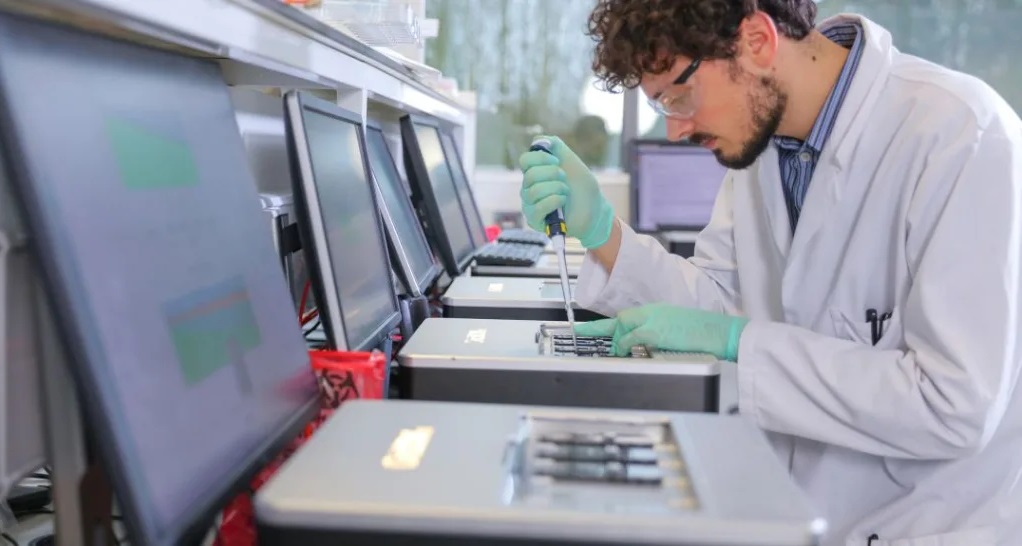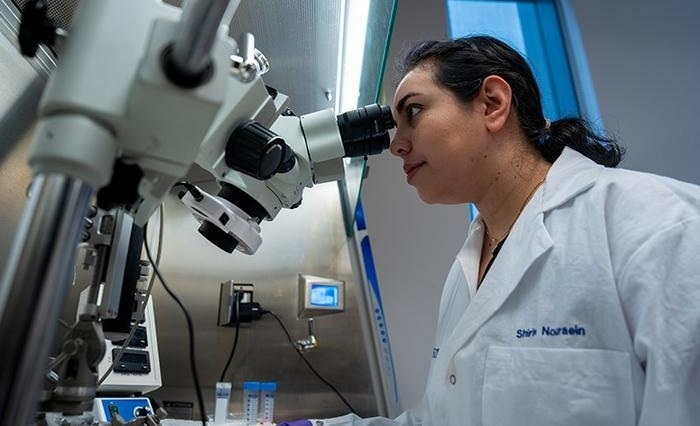Breakthrough in Protein Variant Detection Using Nanopore Technology to Advance POC Diagnostics
Posted on 03 Aug 2023
Human cells hold around 20,000 protein-encoding genes, although the actual number of proteins present in cells far exceeds this figure, with over a million distinct structures known to exist. These variants occur through a procedure known as post-translational modification (PTM), which happens after a protein has been transcribed from DNA. PTM creates structural changes such as adding chemical groups or carbohydrate chains to the individual amino acids that comprise the proteins. As a result, the same protein chain can have hundreds of possible variations. These variants play essential roles in biology, regulating complex biological processes within individual cells. Understanding the variation could greatly enhance our knowledge of cellular functions. However, producing a comprehensive inventory of proteins has so far remained unachievable.
A team of scientists led by the University of Oxford (Oxford, UK) has made a significant breakthrough in identifying variations in protein structures. Their method utilizes cutting-edge nanopore technology to detect structural variations at the single-molecule level, even deep within long protein chains. The researchers successfully devised the protein analysis technique based on nanopore DNA/RNA sequencing technology. In this approach, a directional flow of water captures and unfolds 3D proteins into linear chains that are fed through tiny pores that only permit one amino acid molecule to pass at a time. Structural variations are recognized by measuring fluctuations in an electrical current applied across the nanopore. Each molecule disrupts the current differently, giving them a unique signature.

The team successfully demonstrated the efficacy of this method in detecting three different PTM modifications (phosphorylation, glutathionylation, and glycosylation) at the single-molecule level in protein chains exceeding 1,200 residues. These included modifications deeply embedded within the protein sequence. What is particularly noteworthy is that the method operates without the need for labels, enzymes, or additional reagents. This novel protein characterization technique can be easily integrated into currently available portable nanopore sequencing devices, allowing for the rapid development of protein inventories of single cells and tissues. This could expedite point-of-care diagnostics and facilitate the personalized detection of specific protein variants related to diseases such as cancer and neurodegenerative disorders.
“This simple yet powerful method opens up numerous possibilities. Initially, it allows for the examination of individual proteins, such as those involved in specific diseases,” said Professor Yujia Qing from the Department of Chemistry at the University of Oxford. “In the longer term, the method holds the potential to create extended inventories of protein variants within cells, unlocking deeper insights into cellular processes and disease mechanisms.”
“The ability to pinpoint and identify post-translational modifications and other protein variations at the single-molecule level holds immense promise for advancing our understanding of cellular functions and molecular interactions,” added Professor Hagan Bayley from the Department of Chemistry at the University of Oxford. “It may also open new avenues for personalized medicine, diagnostics, and therapeutic interventions.”
Related Links:
University of Oxford














